About the Nature Education Center
We are proud to announce that we have successfully completed our Nature Education Center Campaign! Our $7M campaign created a new state-of-the-art facility that has already allowed us to 1) expand our educational and training opportunities, 2) enhance our visitor experience, and 3) increase our community initiatives.
Thank you for your support!
We raised $7.3 Million and we are so grateful to the many willing friends who helped us get to this point! THANK you for investing in Cylburn’s Nature Education Center, where Baltimore Grows Together.
Select the + next to each item to explore more about the Nature Education Center.
CYLBURN NATURE EDUCATION CENTER GRAND OPENING
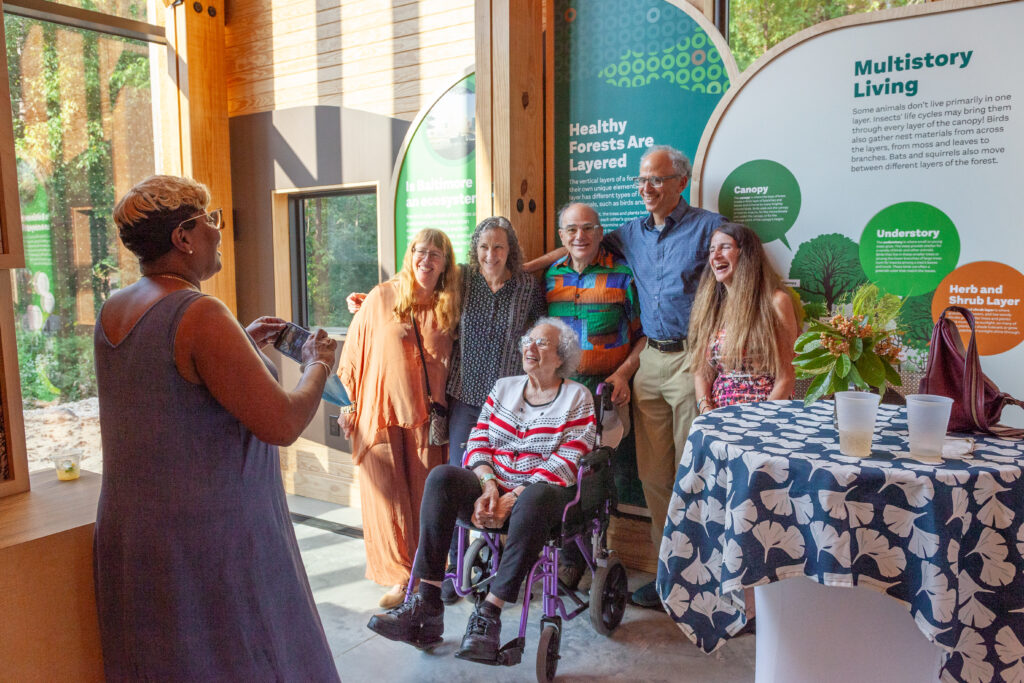
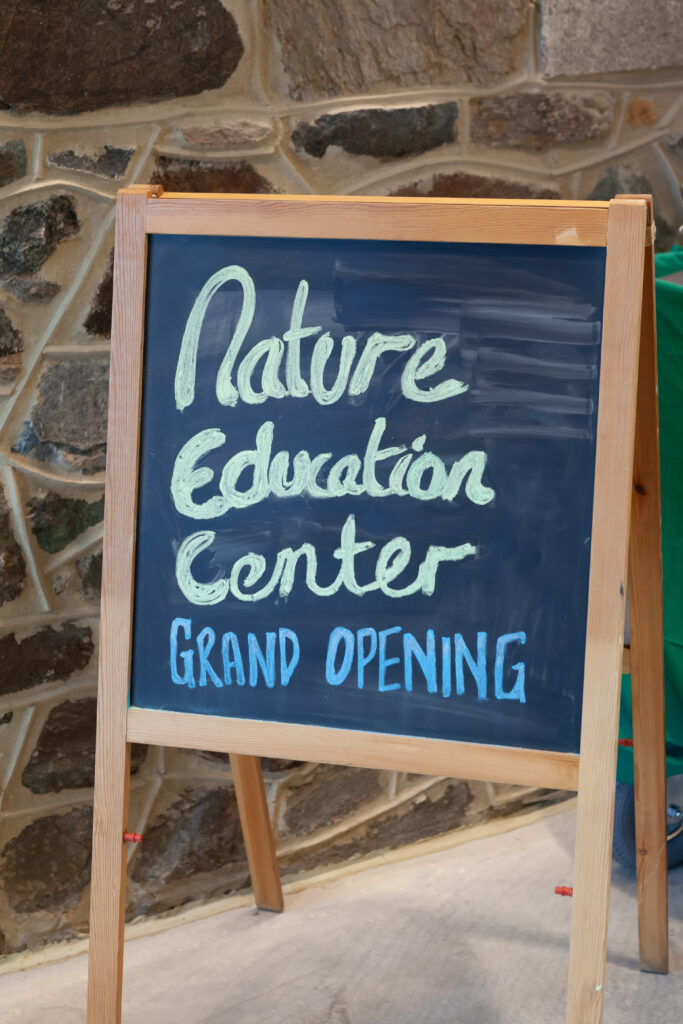

CYLBURN NATURE EDUCATION CENTER GRAND OPENING
The NEC was created when CAF renovated the former Cylburn carriage house and added a new “barn” exhibit hall. It opened in 2023. The carriage house was built in the mid-1800s but the only original features are the stone walls. A fire in 1912 burned the entire structure which was quickly rebuilt by the Cottens to better accommodate modern cars. Today, the carriage house has classroom space, a kitchen and public bathrooms on the ground floor. The upper level is office space for Cylburn Arboretum Friends. The adjacent exhibit hall is a place for visitors to learn more about trees before going out to explore the property.
The exhibit hall houses some Baltimore Bird Club exhibits and dioramas, so we consciously planned the space thinking about our feathered friends. While the trend in modern architecture to maximize natural light – we wanted to do it in a way that doesn’t hurt our avian neighbors. Glass panes are an invisible threat to flying birds. When birds are very active near dawn and dusk, during spring and fall migration, glass is even more difficult to see. According to scientists, window strikes are the third leading cause of avian mortality, behind habitat loss and outdoor cats.
With these statistics in mind, the NEC has a ceramic frit pattern on the large glass windows so that birds are able to see them as they fly on by us. While it barely affects our ability to see out, it enables flying birds to envision a barrier, instead of a thruway. We are happy to be part of a forward trend of bird-safe building design!
In compliance with the Baltimore City Green Construction Code, the NEC was built to be the equivalent of LEED Silver standards although cost prohibited certification. Given our status as an Arboretum, we make every effort to be environmentally sustainable. For example, as part of our renovation process, we worked with CityScape Engineering to create a storm water management design for the building that includes cisterns to collect runoff. We sourced local fallen wood from neighboring Camp Small to build our “backyard” sheds and fences as well as the Ash table in our resource center, beautifully created by local Sandtown Furniture Company.
Carrying out into the new Jean and Sidney Silber Teaching Garden attached to the NEC, we again used recycled “fallen Cylburn wood” benches. The garden plan incorporated a stormwater plan that is designed to improve water quality on the grounds including displays of plants that thrive in our region and minimize runoff. We designed the NEC to be a place to not only learn about trees, but also various ways that we can care for our land and minimize damage to the planet.
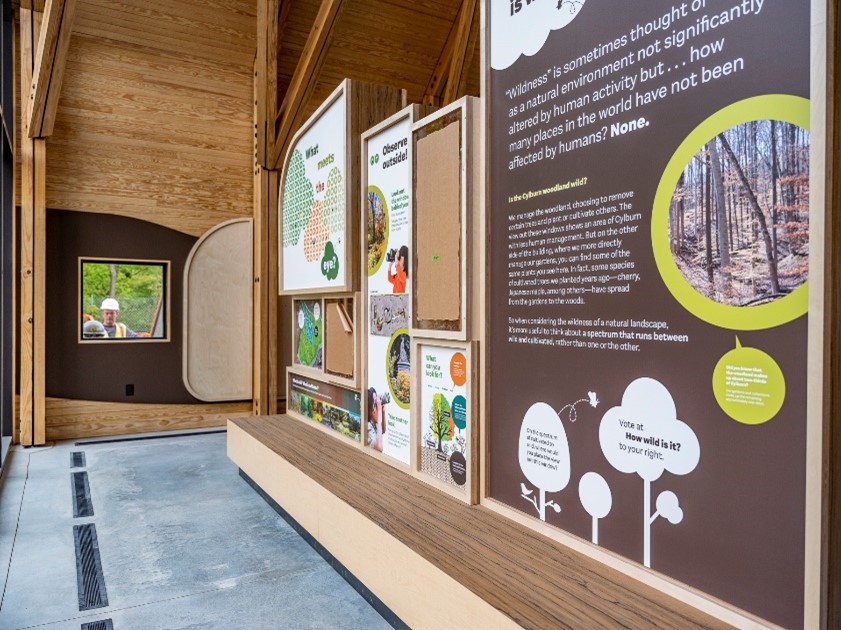
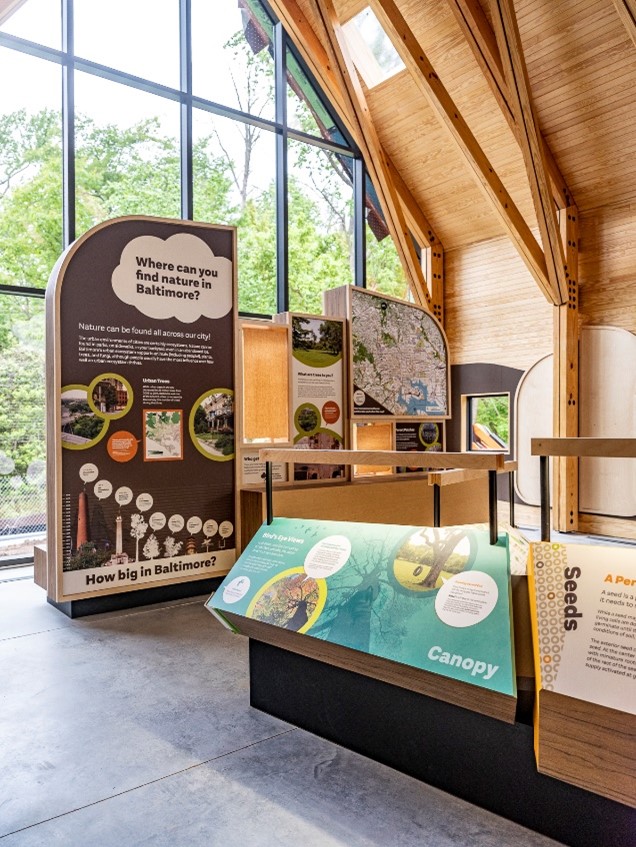
A Message from our Education Director, Erika Castillo
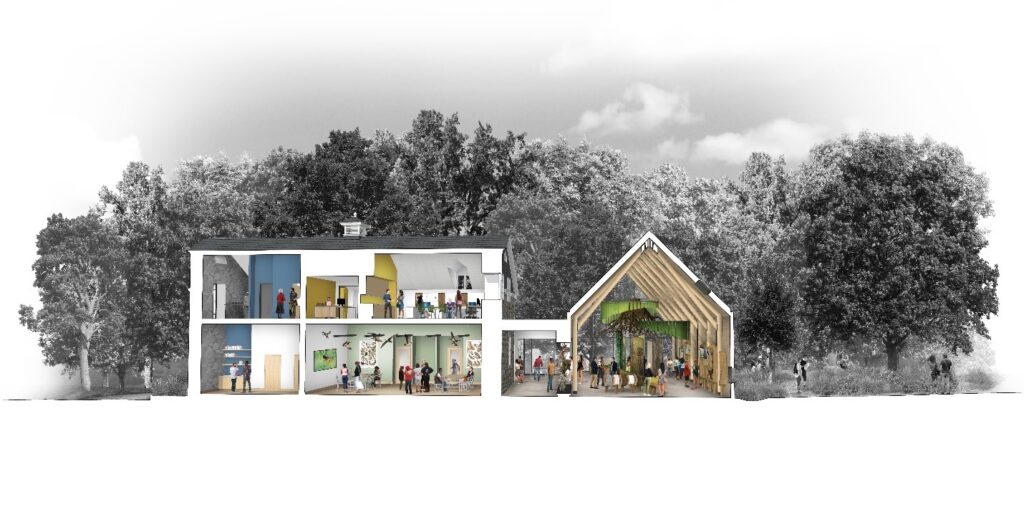
I couldn’t be more excited about our future Nature Education Center (NEC) and the possibilities it will open up for learning at Cylburn. I see the NEC enhancing education in three key ways. First, it will serve as a centralized launching point for persons and groups exploring the arboretum. Second, the NEC will offer flexible classroom spaces for multiple and varied gatherings. Third, it will house numerous interactive exhibits. All of this will enrich our existing education work and provide more opportunities for learning.
Picture a stark wintry day at Cylburn. The deciduous trees are bare. The grounds seem to extend infinitely in all directions. For a newcomer to the arboretum, this scene might appear disorienting. Now, imagine a building where visitors can pick up maps of the grounds and explore the exhibits of the Nature Education Center before heading out to walk the trails. At the same time, a group of adults has assembled to attend lecture by a bat expert. In a classroom, a school group is sharing the insect data that they collected on a hike on the grounds. Meanwhile, a family returns from their hike and wants to know about a plant they have seen in the woods. They go to the “Resource Room” where they investigate a guidebook and chat with a naturalist to identify the plant. The family adds the name and a drawing to a list on the wall. This is the home the NEC will allow us to provide for visitors. It will also be my new headquarters, so that the children that I work with during school visits and field trips will know where to find me when they return with their families on the weekends. And of course we will have so much more classroom space!

Our exhibit space in the new Nature Education Center will be devoted to the hidden world of trees. An expertly crafted model of a giant root ball will greet visitors as they enter the exhibition hall. The root ball will be suspended overhead so that you can see the extensive network of roots that is normally hidden in the soil. Elsewhere, you’ll be able to pull out a re-created sample of the tree’s core to examine the inside of its trunk. Continue down the exhibit to a display where you can check and record real-time temperature readings from locations around the arboretum (such as the parking lot, lawn, and wooded paths) in order to determine the effects that trees have on air temperature.
All the exhibits in the NEC will be designed to prompt visitors to ask questions, inviting them to consider all that they observe at Cylburn Arboretum more deeply. In addition to our permanent exhibits, we will have a series of interactive spaces for rotating seasonal exhibits. Picture here: a “Birds Spotted This Month!” species list for families to add to; a “What’s in Bloom?” chart in the spring, summer, and fall; a display of citizen science findings from school groups; and a collection of pressed flowers and other nature art created during school-age and adult programming. There will be something new for guests to learn every time they come to visit!
Every day at Cylburn Arboretum we educate visitors about the natural world as well as our responsibility for that world. We are so excited to have more opportunities to share our message in the future Nature Education Center!
A Message from our Head Gardener, Brent “Fig” Figlestahler
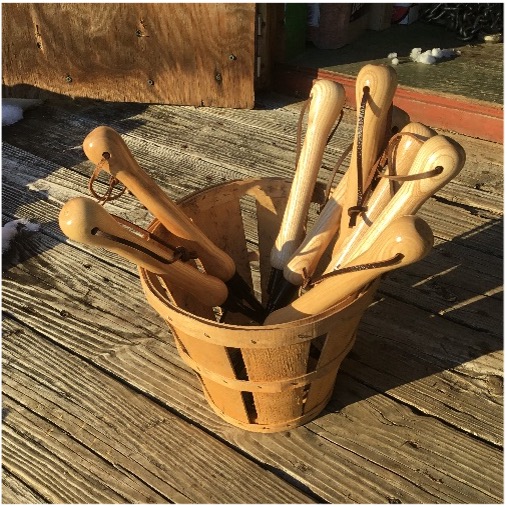

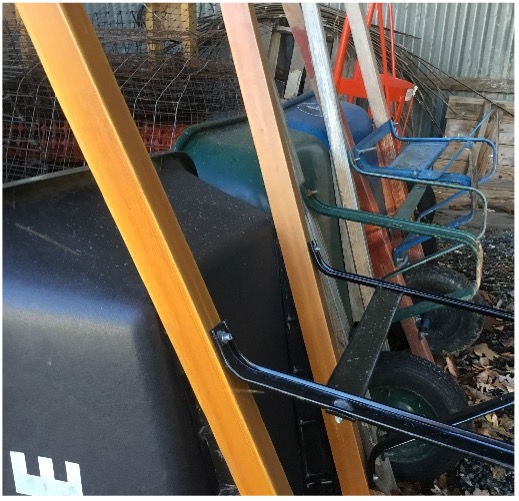
A truly thriving garden is a series of wild and contrived environments. Such a garden is necessarily supported by a system that is simultaneously ecological, cultural, and infrastructural. One very important component of our carriage house renovation is the creation of a home for Cylburn Arboretum Friends’ current and future horticulture program. Behind all great gardens lies a storage, meeting, and work space dedicated to supporting the craft of gardening. The future Nature Education Center (NEC) will provide just that for CAF’s field operations. Improvements will include a garden work room, a model yard space, and a new garden shed complex. To the uninitiated, these mundane place names do no justice to the transformative power they hold as working spaces.
A garden workroom will serve both the grounds and educational efforts as a place of experimentation and learning. Equal parts laboratory, potting room, and ranger station, this space will be a meeting point for volunteers, a reliable surface area for making seasonal wreaths, a conditioned space to dry seeds, or maybe even a workshop for the manufacture of plant tags.
In the model yard space, picture a place where plants can be trialed and trained or a space where harvested bamboo can be converted into stakes or split into hoops.
While these spaces are filling needs as simple as a workspace with surface area or a sheltered location to store a change of clothing, they are also laying the groundwork for increased capacity whether storage for additional equipment or extra space for new staff and volunteers. On a cultural level, we hope to legitimize the role of skilled horticultural workers by dedicating a space to the craft and its demonstration. Each component of our renovation will be a large step toward the creation of a Cylburn pre-apprenticeship in horticulture and the continued improvement of our intern program. Rather than hide away these spaces as back-of-house operations, we want to bring to light the care and skilled support required by quality landscapes.
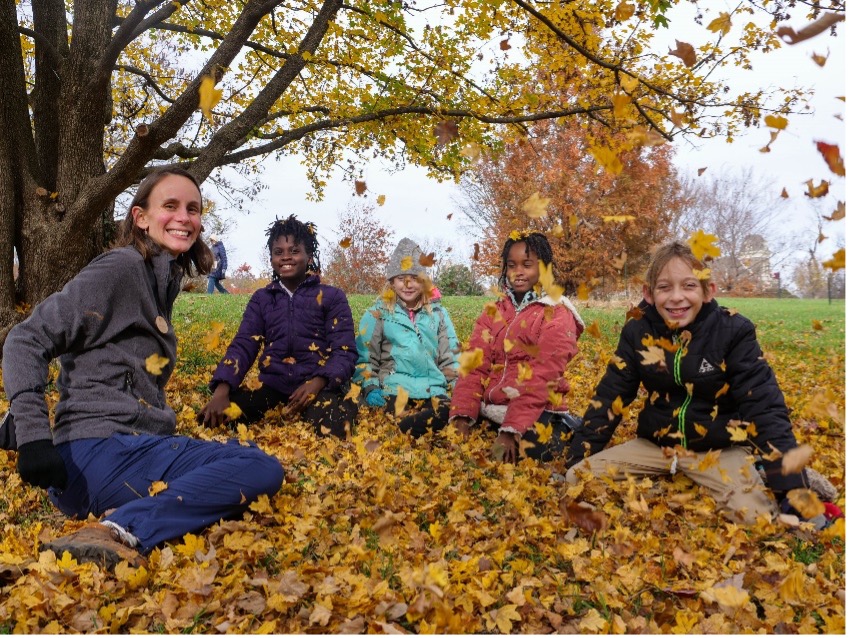
Cylburn Arboretum with acres of open space, miles of woodland trails, and dozens of well-maintained gardens has long been heralded as a valuable community resource. Ever since it became a public park, Cylburn has been a place that draws people together— creating community. From enthusiastic volunteers to devoted staff to intrepid naturalists— people join us because of a dedication to the same thing: nature in the city
We love being a natural resource for Baltimore. But there is a term that we aren’t too fond of and that is hidden gem. It is the hidden part we want to change. We expect the opening of the future Nature Education Center (NEC) will make us a hub of activity.
Cylburn Arboretum is a living laboratory for people observing changes in plant phenology because of a warming world, it is a place to get real world experience in horticulture, and it is a wonderful counterbalance to online learning for young people—a 200-acre natural classroom. The new Nature Education Center will be a place for all of us to learn together. By putting the Arboretum in a broader setting, the NEC will help us better understand how inextricably connected we all are to each other. A place where Baltimore Grows Together.
The Team
Zieger | Snead
Project architects
Metcalfe Architecture and Design of Philadelphia
Exhibit designers
Intreegue Design, Inc.
Landscape architecture
Cityscape Engineering, LLC
Storm water management
Lewis Construction
Construction management
